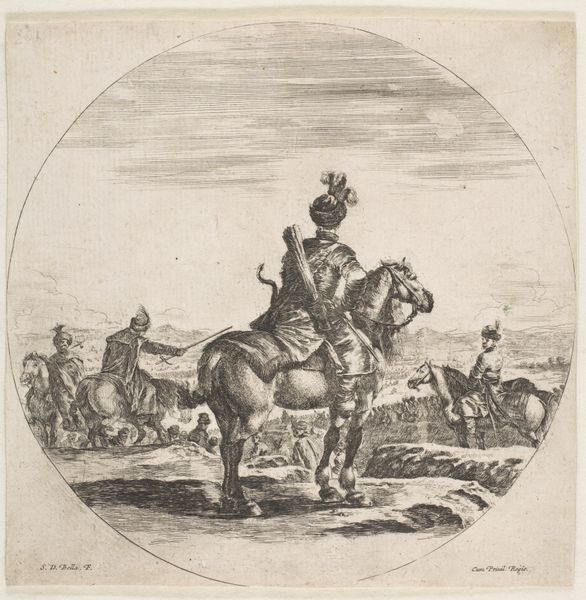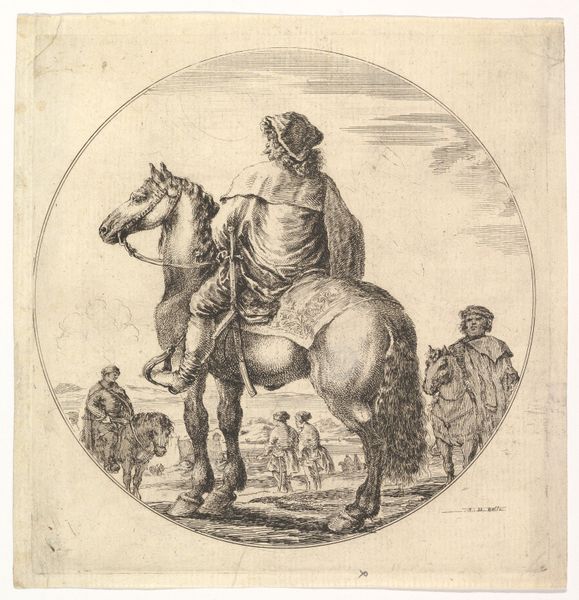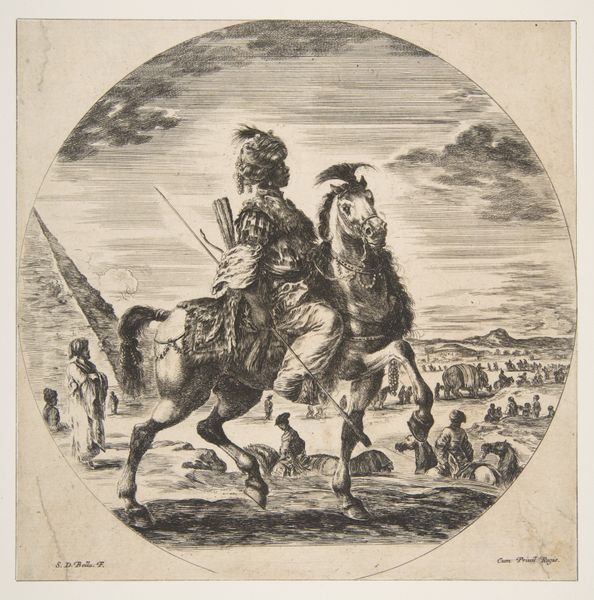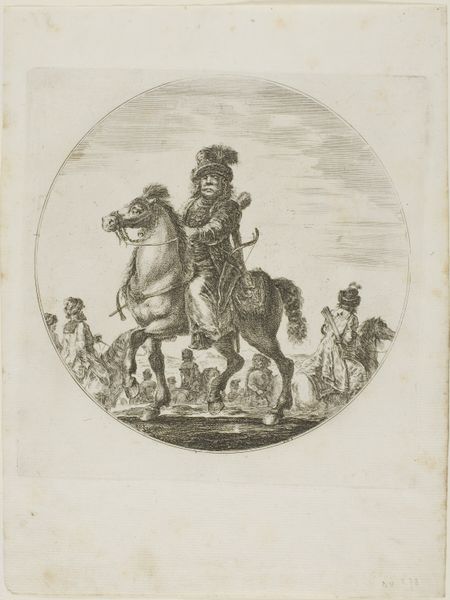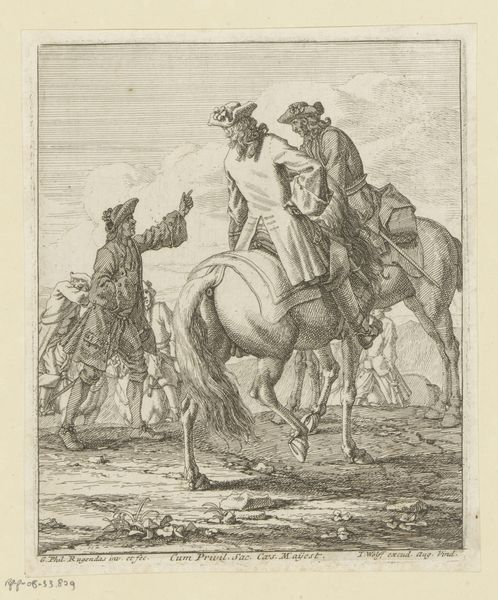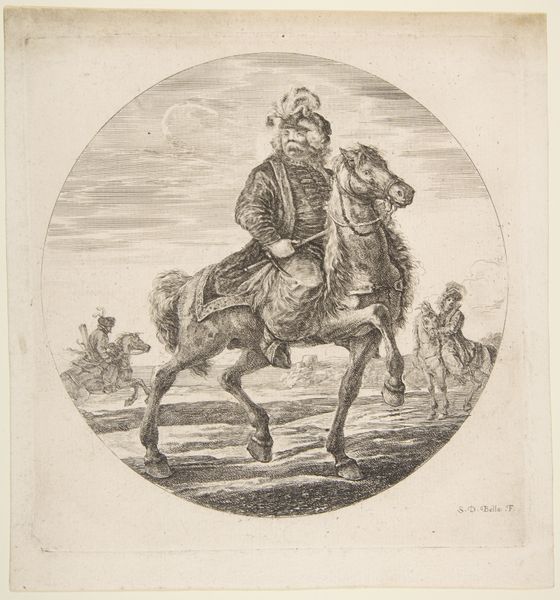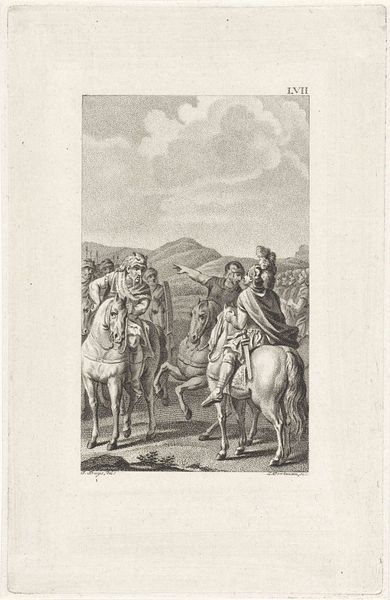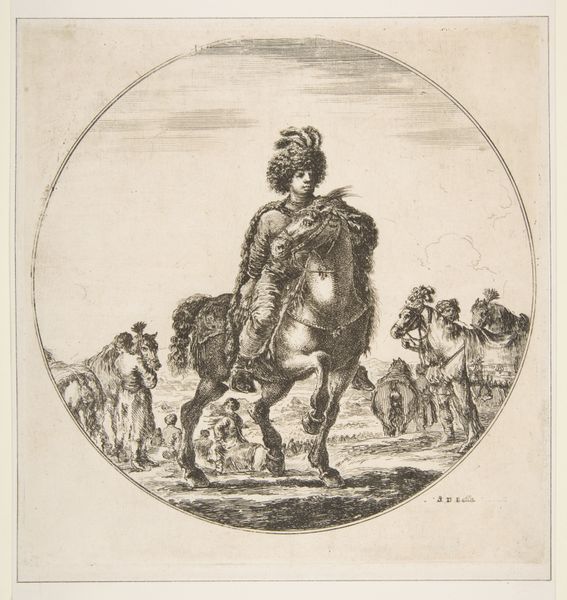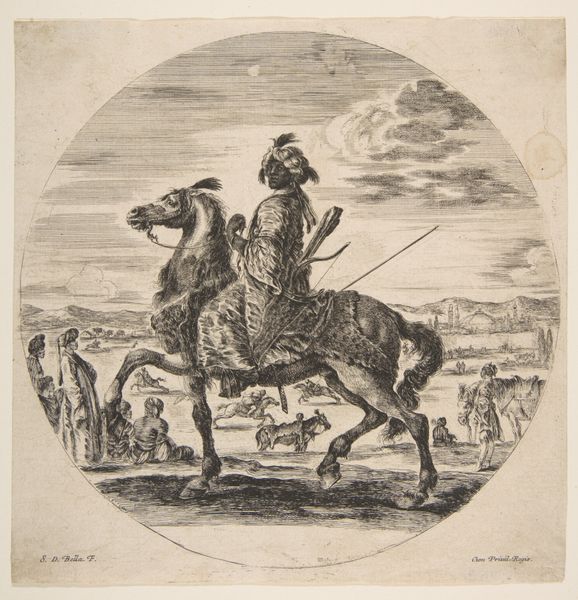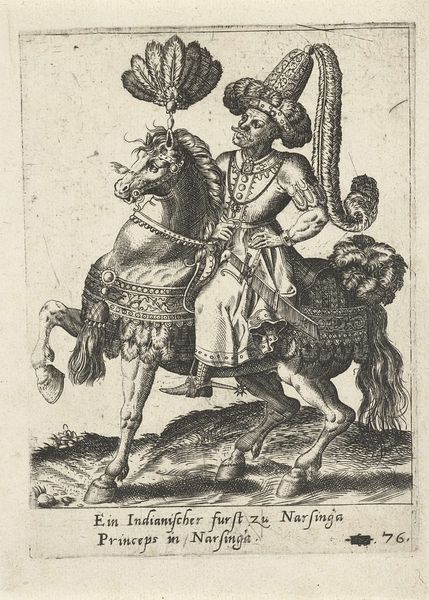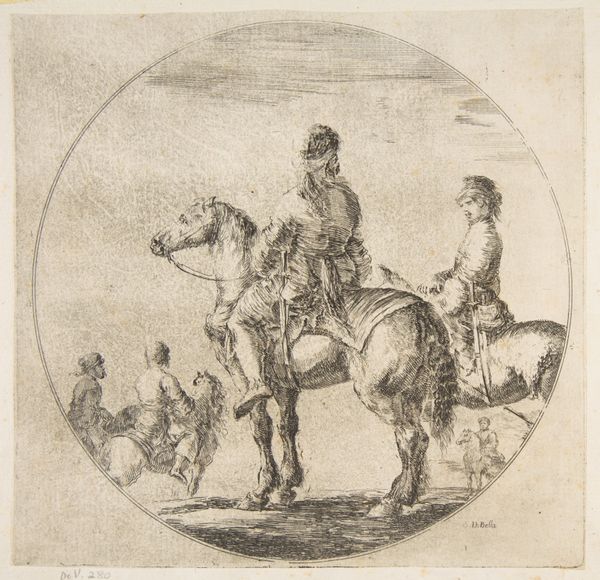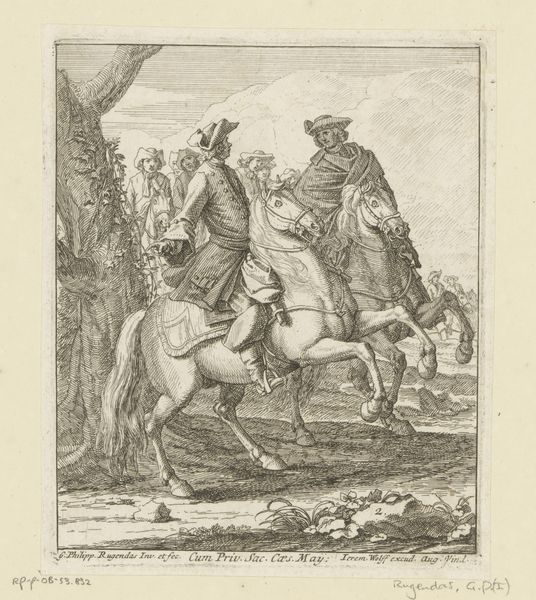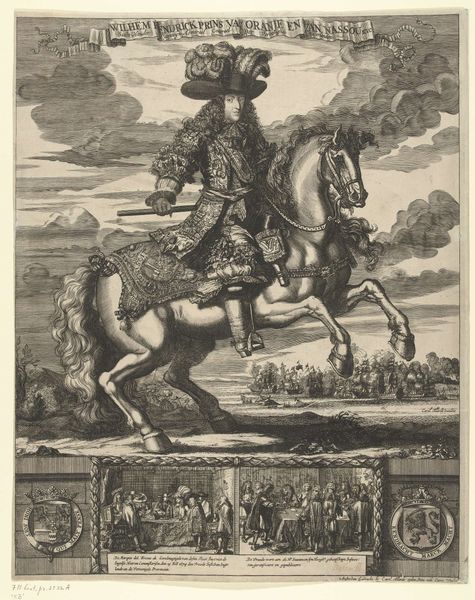
Moorish horseman in profile facing right, a black slave holding a fur at right, another horseman to left in the background, from 'Figures on Horseback' (Cavaliers nègres, polonais et hongrois) 1646 - 1656
0:00
0:00
drawing, print, etching
#
portrait
#
drawing
#
narrative-art
#
baroque
# print
#
etching
#
figuration
#
orientalism
#
history-painting
Dimensions: Plate: 7 1/2 × 7 1/16 in. (19.1 × 17.9 cm) Sheet: 7 13/16 × 7 5/16 in. (19.8 × 18.5 cm)
Copyright: Public Domain
Editor: So, this is Stefano della Bella's etching, "Moorish horseman in profile facing right..." from around 1646 to 1656. It's striking how detailed he got with just etching on metal. What stands out to you when you look at this? Curator: The most prominent feature is that the making of prints was about multiplying images that spoke about a specific cultural and economic moment. Consider the implications of depicting a "Moorish horseman" with an enslaved figure, then reproducing it *en masse.* What relationship does the artist—and by extension, the presumed European audience—have to these figures and this scene? Editor: So you're saying the material itself - the print - has an impact on the artwork's message. Do you mean how affordable prints were and therefore available to a wider range of social classes? Curator: Precisely! The relative accessibility of prints, compared to, say, an oil painting, meant this imagery, with its loaded power dynamics, circulated more broadly. The labour that went into both making the print and depicting such labor arrangements gives a real jolt. Editor: That's a very insightful way to frame it. The relationship between the materials, labor, and subject matter is quite revealing about 17th-century society. I hadn't really thought about that. Curator: It’s easy to get caught up in the aesthetics, but remembering that art exists within material and social structures deepens our understanding. Even the supply chains to secure the etching tools! What do you make of that fuzzy fur coat depicted at the right edge? It’s like Della Bella is prompting you to touch the image... Editor: Now I'm considering the commerce and colonial networks at play! I guess that "Orientalism" tag is only a piece of it. Thanks for putting it into that context. Curator: My pleasure! Considering the mode of production reframes our entire view of this image.
Comments
No comments
Be the first to comment and join the conversation on the ultimate creative platform.
